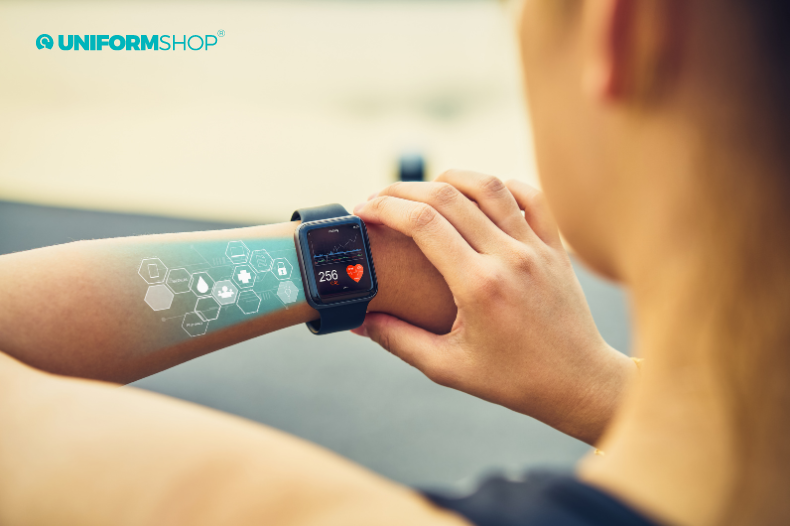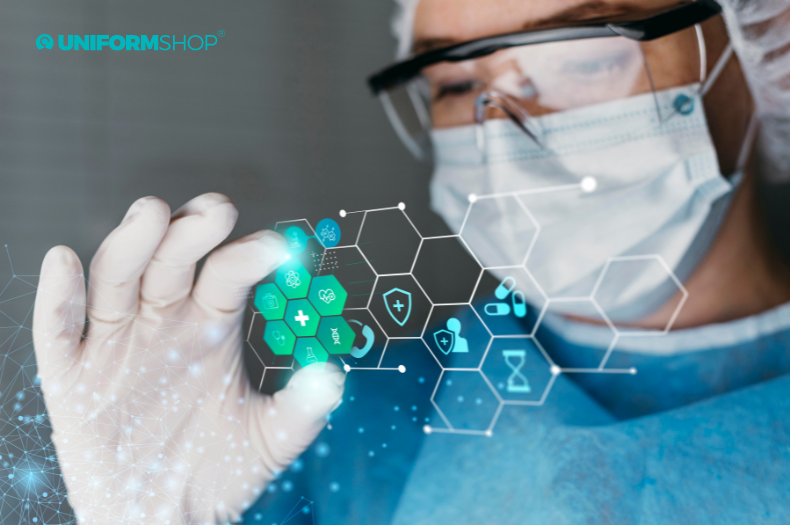New medical technologies you need to know

In today’s world, technological advancement is used to improve the quality of life in almost all its aspects. The same applies to medicine. No wonder – smart use of technology can create numerous opportunities. It supports the patient treatment process and helps doctors, nurses and other healthcare professionals in their work.
What are the latest technologies in medicine that you need to know? Here’s a short overview of the most practical solutions that show the future of medicine.
Contents:
Automated patient assistance
Virtual wards
Healthcare gadgets
Digital therapeutics
Key takeaways:
- The latest innovations help automate repetitive tasks, such as appointment registration.
- Thanks to novel solutions, such as virtual wards, the number of patients in actual hospital wards can be reduced.
- Many popular gadgets, e.g. smartwatches, can improve their users’ health and make life easier for persons with various diseases, such as diabetes.
- Some forms of treatment can be integrated with the digital reality to facilitate recovery at home, e.g. in the case of physical therapy.
Automated Patient Assistance
The global pandemic has demonstrated how important it is to automate various medical processes, including patient assistance – from appointment booking to prescription filling. Obviously, all these processes are very time-consuming and labour-intensive. At the same time, they have a key impact on the whole healthcare system.
Fortunately, the growth of artificial intelligence, especially chatbots and voicebots, may considerably streamline these processes. AI bots can take over some mechanical tasks to relieve medical staff. As a result, the quality of services in health centres will improve.
What can these bots do? Their most common tasks include:
- booking appointments,
- responding to frequently asked questions,
- managing reservations,
- sending messages and notifications,
- guiding patients through recurring procedures.
And there’s more! At the 2023 Google l/O developer conference, Google announced its latest language model – PaLM 2. It will compete on the market with the most popular ChatGPT. PaLM 2 will power numerous tools by Google, including Med-PaLM – a chatbot that will support diagnosing medical conditions.
Of course, no technology can replace health specialists with their knowledge and experience. However, solutions of this kind can speed up their work.
Virtual Wards
Another solution which has been developed as a result of the pandemic is virtual wards. Virtual wards are particularly popular in Great Britain: their number there is growing year by year.
What does this mean in practice? Patients with basic symptoms and ailments, such as upper respiratory tract infections, arthritis or common cold, can consult specialists online.
Some health centres have mobile wards equipped with telemedicine devices. They can regularly visit patients and see to their health – but the patients don’t have to go to hospital. Thanks to that, only persons who require intensive care remain in hospitals.
Healthcare Gadgets
Modern smartphones and smartwatches come with many interesting apps that support a healthy lifestyle. Of course, free apps are usually imprecise and they can only serve as interesting gadgets. However, they do show the right direction.

What are the examples of state-of-the-art medical tools? Apple is working on a non-invasive device that will monitor blood glucose. Other companies, also start-ups, are researching other possibilities.
For instance, Withins is developing an at-home urine lab that will test three parameters (LH, pH and specific gravity). U-Scan will help users track their menstrual cycle, vitamin C levels and metabolic health. The company is planning to release it later this year in the US. Such at-home solutions are bound to gain popularity – it’s just a matter of time.
Manufacturers that implement modern health monitoring systems have a lot of areas to explore. They create apps and accessories that measure not only glucose but also cholesterol, blood oxygen and other parameters. With such tools, patients can carefully keep track of their health, while the data they gather will help doctors diagnose them and choose the right treatment plan.
Digital Therapeutics
Digital therapeutics, also known as DTx, are technology-based treatment methods that help patients diagnose and manage their health problems. Only certified tools of this kind are effective – free apps can sometimes do more harm than good.
In many European Union countries, evidence-based solutions are getting increasingly popular and they are used as often as on-site therapies. A good example of a digital therapy tool is Kaia Health. The solution uses AI algorithms to help patients monitor their exercise programs. As a result, users are able to carry out safe and effective physical therapy routines at home.
With such applications, patients don’t need so much time to achieve the desired therapy results, as they simply use their smartphones or laptops to do exercises.

Conclusion
Without a doubt, newest technologies in medicine prove extremely helpful to healthcare professionals. For now, these solutions serve only as extra tools. However, what healthcare workers need on a daily basis is durable good-quality clothing that will translate into the good quality of their work. Check out our men’s and women’s scrubs. We’ll take care of your daily comfort!
